



The market continued its upward journey for the fifth consecutive day on October 21, closing 25 points higher amid volatility with a healthy market breadth. The technical and momentum indicators remained quite strong, with a consistent higher high-higher low structure, even after a significant rally since the start of the current month. Hence, the index is expected to face a hurdle at 26,000, as decisively surpassing this level could open the door for a move to 26,200-26,300 (which coincides with the record high of 26,277 seen in September 2024) in the upcoming sessions, provided the index defends support in the 25,750-25,700 zone, according to experts.
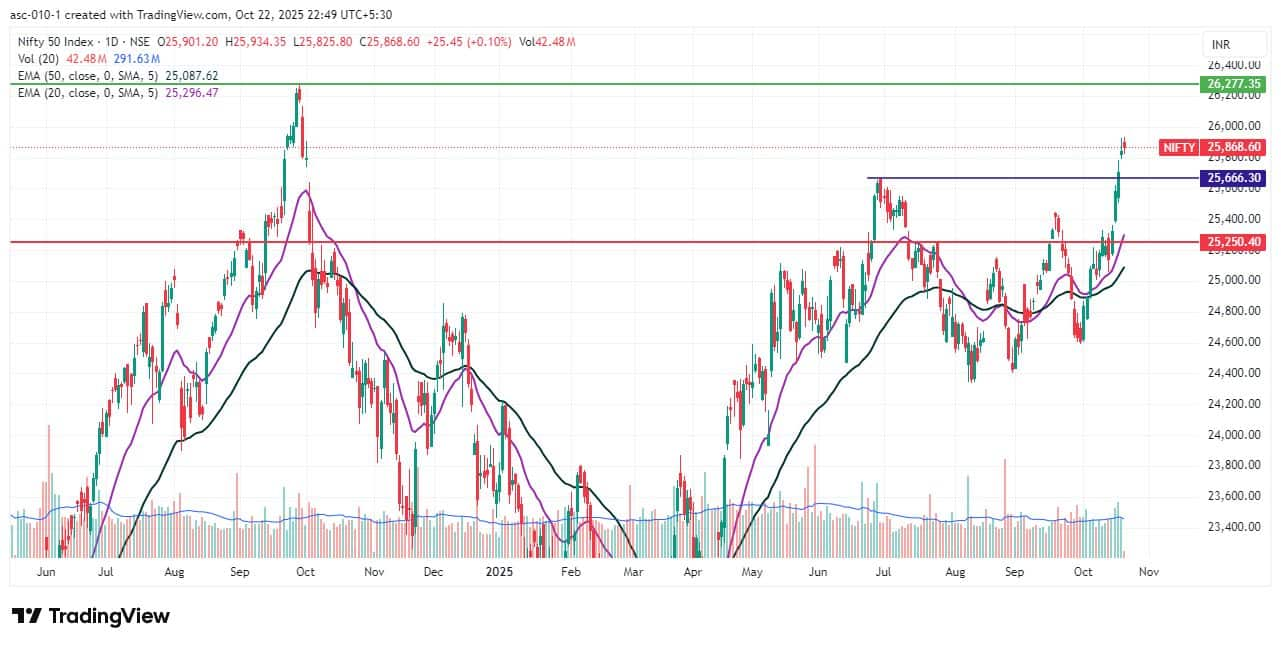
Here are 15 data points we have collated to help you spot profitable trades:
1) Key Levels For The Nifty 50 (25,869)
Resistance based on pivot points: 25,918, 25,943, and 25,985
Support based on pivot points: 25,835, 25,809, and 25,768
Special Formation: The Nifty 50 formed a bearish candle with minor upper and lower shadows on the daily charts, indicating volatility, but remained at the upper Bollinger Band. The index maintained its higher high-higher low structure, with all key moving averages trending northward. The RSI, at 72.26, and the MACD sustained their upward momentum, with the histogram strengthening. All this indicates continued positive sentiment.
2) Key Levels For The Bank Nifty (58,007)
Resistance based on pivot points: 58,119, 58,183, and 58,285
Support based on pivot points: 57,914, 57,851, and 57,748
Resistance based on Fibonacci retracement: 58,735, 60,142
Support based on Fibonacci retracement: 57,152, 56,466
Special Formation: The Bank Nifty also traded near the upper Bollinger Band, though it formed a small bearish candle with minor upper and lower shadows on the daily timeframe within the previous day's range. All key moving averages trended upward, while the RSI remained well above the 70 mark, at 76.17. The MACD continued its northward trajectory, with the histogram staying above the zero line. This suggests sustained positive momentum.
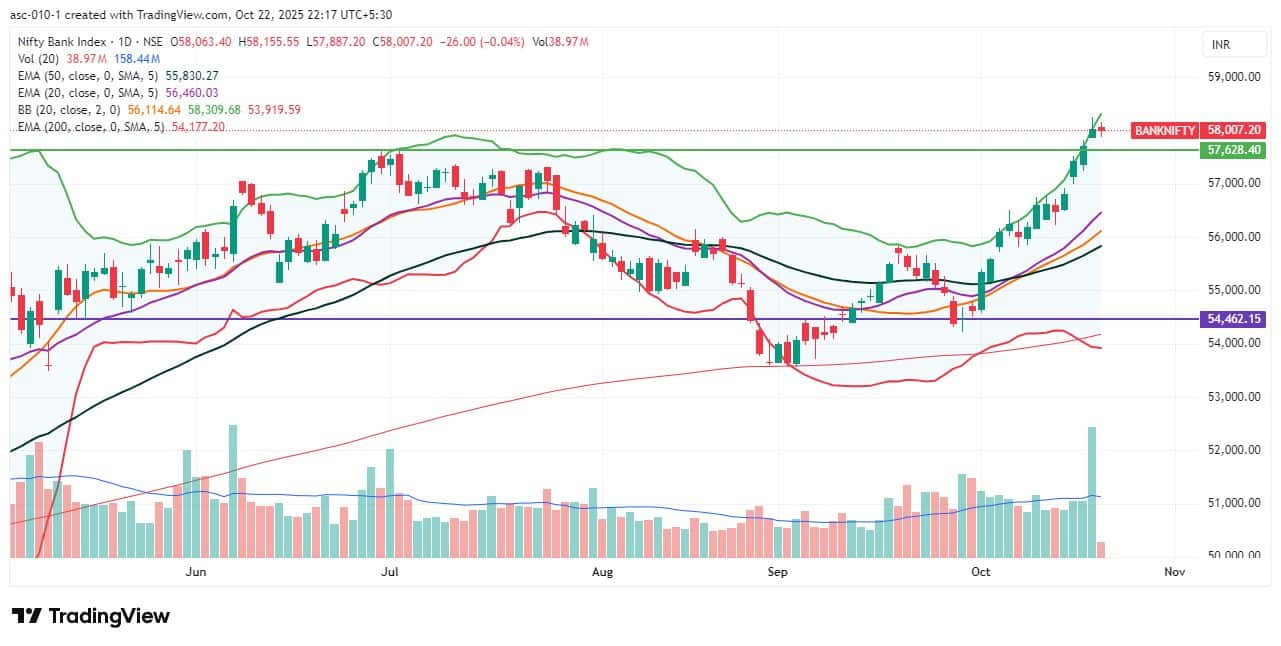
According to the monthly options data, the maximum Call open interest was seen at the 26,000 strike (with 1.09 crore contracts). This level can act as a key resistance for the Nifty in the short term. It was followed by the 26,500 strike (93.18 lakh contracts), and the 25,900 strike (72.62 lakh contracts).
Maximum Call writing was observed at the 26,400 strike, which saw an addition of 35.07 lakh contracts, followed by the 25,900 and 26,000 strikes, which added 19.27 lakh and 16.39 lakh contracts, respectively. The maximum Call unwinding was seen at the 25,500 strike, which shed 1.39 lakh contracts, followed by the 25,650 and 25,600 strikes, which shed 84,900 and 42,825 contracts, respectively.

On the Put side, the 25,500 strike holds the maximum Put open interest (with 95.97 lakh contracts), which can act as a key support level for the Nifty. It was followed by the 25,200 strike (69.72 lakh contracts) and the 25,700 strike (64.7 lakh contracts).
The maximum Put writing was placed at the 25,500 strike, which saw an addition of 21.31 lakh contracts, followed by the 25,900 and 25,600 strikes, which added 17.49 lakh and 14.66 lakh contracts, respectively. There was hardly any Put unwinding seen in the 25,200-26,600 strike band.

5) Bank Nifty Call Options Data
According to the monthly options data, the 57,000 strike holds the maximum Call open interest, with 17.23 lakh contracts. This can act as a key level for the index in the short term. It was followed by the 58,000 strike (16.8 lakh contracts) and the 59,000 strike (11.19 lakh contracts).
Maximum Call writing was observed at the 58,000 strike (with the addition of 1.78 lakh contracts), followed by the 58,100 (63,105 contracts) and 59,700 strike (47,565 contracts). The maximum Call unwinding was seen at the 58,500 strike, which shed 96,530 contracts, followed by the 58,800 and 57,000 strikes, which shed 57,260 and 42,280 contracts, respectively.

6) Bank Nifty Put Options Data
On the Put side, the maximum Put open interest was seen at the 57,000 strike (with 20.06 lakh contracts), which can act as a key support level for the index. This was followed by the 56,000 strike (14.99 lakh contracts) and the 58,000 strike (9.39 lakh contracts).
The maximum Put writing was placed at the 57,500 strike (which added 1.5 lakh contracts), followed by the 56,000 strike (47,425 contracts) and the 56,100 strike (34,965 contracts). The maximum Put unwinding was seen at the 57,000 strike which shed 2.07 lakh contracts, followed by the 58,500 and 56,900 strikes, which shed 15,330 and 12,460 contracts, respectively.

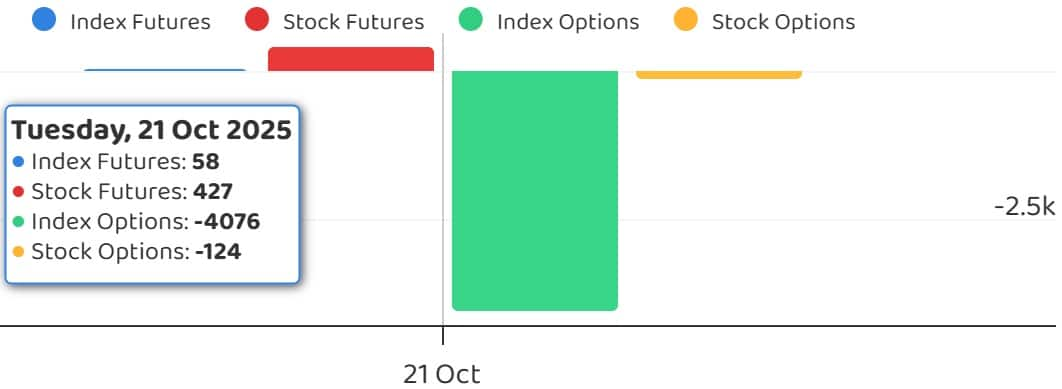
The Nifty Put-Call ratio (PCR), which indicates the mood of the market, declined to 1.08 on October 21, compared to 1.15 in the previous session.
The increasing PCR, or being higher than 0.7 or surpassing 1, means traders are selling more Put options than Call options, which generally indicates the firming up of a bullish sentiment in the market. If the ratio falls below 0.7 or moves towards 0.5, then it indicates selling in Calls is higher than selling in Puts, reflecting a bearish mood in the market.
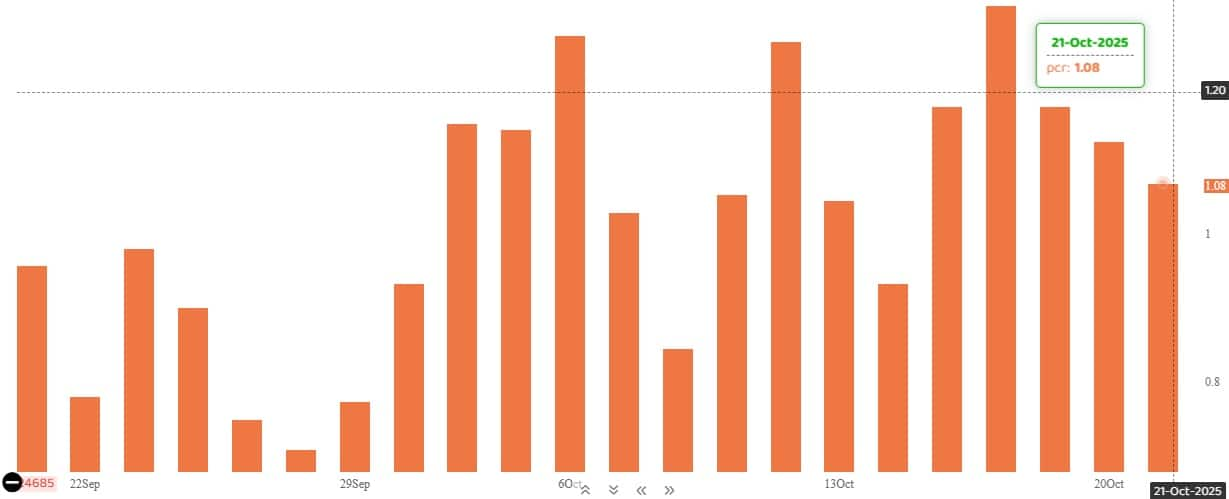
9) India VIX
The India VIX, also known as the fear gauge, remained near its lower zone despite trading above short- and medium-term moving averages. It fell 0.51 percent on Tuesday to 11.30, signaling comfort for bulls.

A long build-up was seen in 53 stocks. An increase in open interest (OI) and price indicates a build-up of long positions.

11) Long Unwinding (55 Stocks)
55 stocks saw a decline in open interest (OI) along with a fall in price, indicating long unwinding.
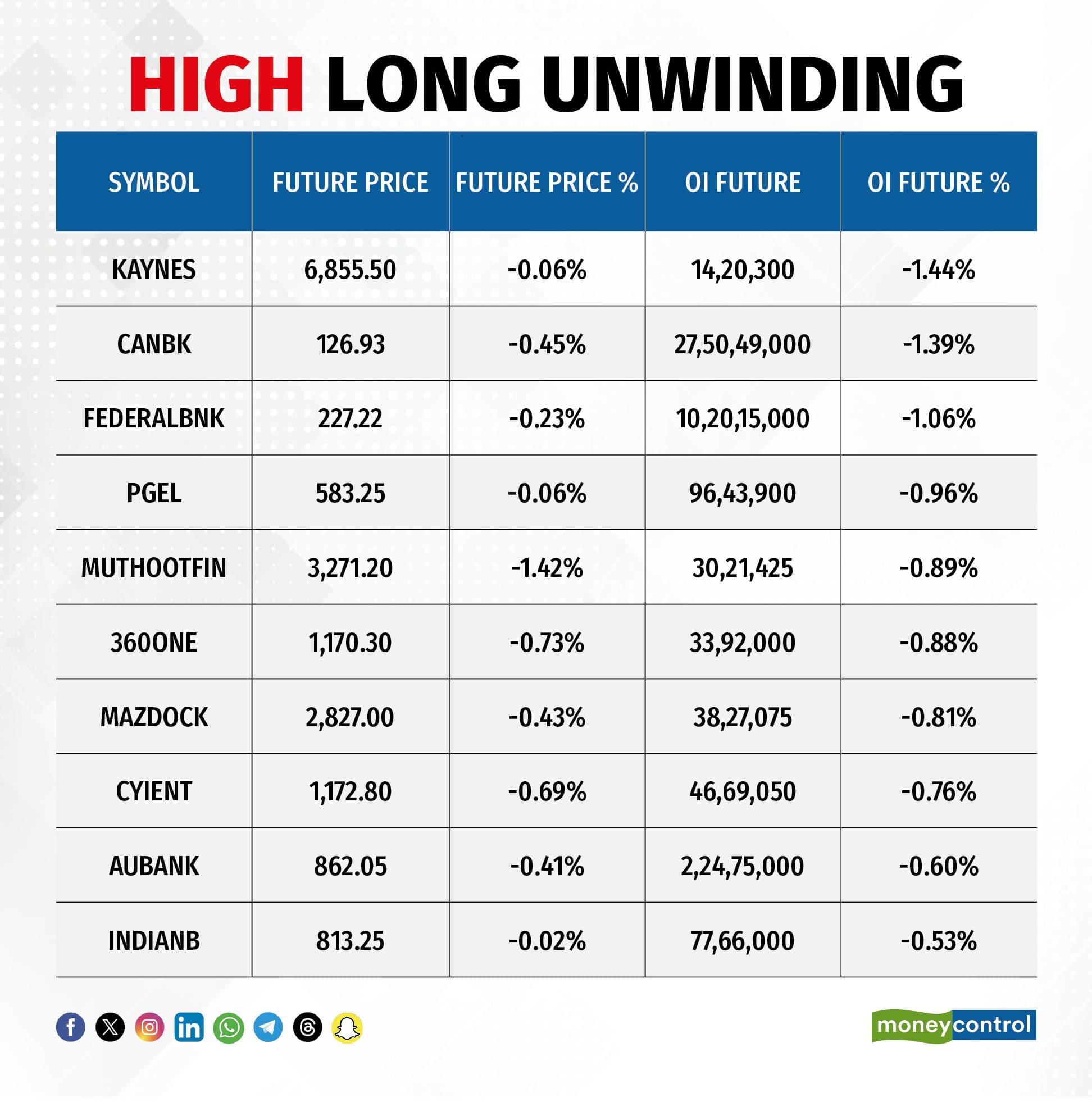
12) Short Build-up (79 Stocks)
79 stocks saw an increase in OI along with a fall in price, indicating a build-up of short positions.

13) Short-Covering (23 Stocks)
23 stocks saw short-covering, meaning a decrease in OI, along with a price increase.

Here are the stocks that saw a high share of delivery trades. A high share of delivery reflects investing (as opposed to trading) interest in a stock.

Securities banned under the F&O segment include companies where derivative contracts cross 95 percent of the market-wide position limit.
Stocks added to F&O ban: Nil
Stocks retained in F&O ban: Sammaan Capital
Stocks removed from F&O ban: Nil
Disclaimer: The views and investment tips expressed by experts on Moneycontrol are their own and not those of the website or its management. Moneycontrol advises users to check with certified experts before taking any investment decisions.
Disclaimer: Moneycontrol is a part of the Network18 group. Network18 is controlled by Independent Media Trust, of which Reliance Industries is the sole beneficiary.
Discover the latest Business News, Sensex, and Nifty updates. Obtain Personal Finance insights, tax queries, and expert opinions on Moneycontrol or download the Moneycontrol App to stay updated!